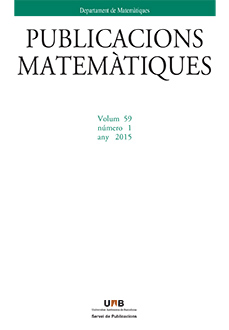Abstract
Let $L/K$ be a $G$-Galois extension of fields with an $H$-Hopf Galois structure of type $N$. We study the Galois correspondence ratio $GC(G, N)$, which is the proportion of intermediate fields $E$ with $K \subseteq E \subseteq L$ that are in the image of the Galois correspondence for the $H$-Hopf Galois structure on $L/K$. The Galois correspondence ratio for a Hopf Galois structure can be found by translating the problem into counting certain subgroups of the corresponding skew brace. We look at skew braces arising from finite radical algebras $A$ and from Zappa–Szép products of finite groups, and in particular when $A^3 = 0$ or the Zappa–Szép product is a semidirect product, in which cases the corresponding skew brace is a bi-skew brace, that is, a set $G$ with two group operations $\circ$ and $\star$ in such a way that $G$ is a skew brace with either group structure acting as the additive group of the skew brace. We obtain the Galois correspondence ratio for several examples. In particular, if $(G, \circ, \star)$ is a bi-skew brace of squarefree order $2m$ where $(G, \circ) \cong Z_{2m}$ is cyclic and $(G, \star) \cong D_m$ is dihedral, then for large $m$, $GC(Z_{2m},D_m)$ is close to $1/2$ while $GC(D_m, Z_{2m})$ is near $0$.
Citation
Lindsay N. Childs. "On the Galois correspondence for Hopf Galois structures arising from finite radical algebras and Zappa–Szép products." Publ. Mat. 65 (1) 141 - 163, 2021. https://doi.org/10.5565/PUBLMAT6512105
Information





